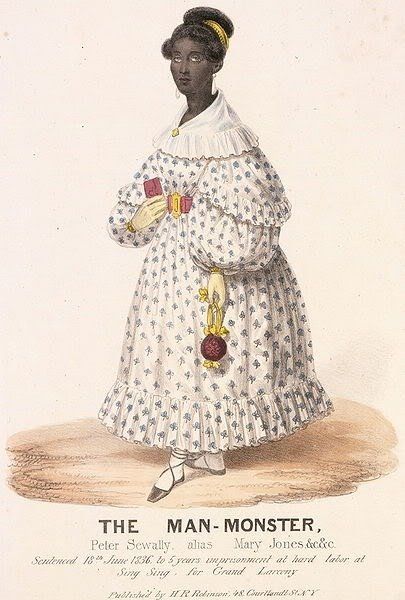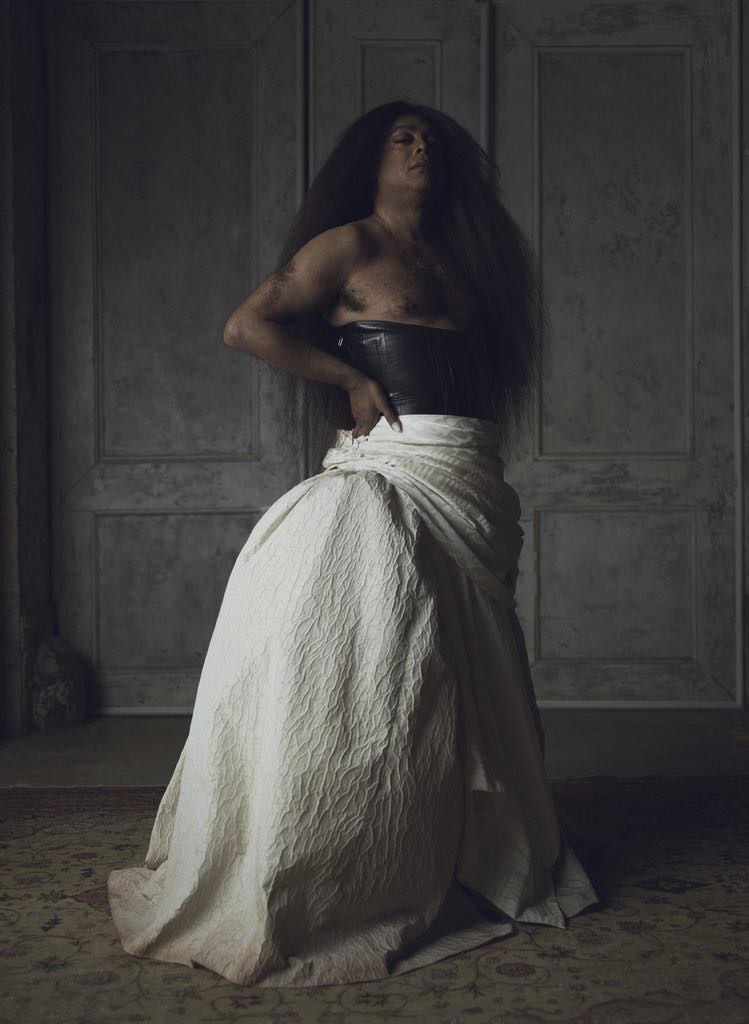Queer History
Allow me to begin a new series titled “Queer History” where I, EJ, dive deep into little known yet significant queer people from history! Pretty self explanatory, right? Let’s learn about…. MARY JONES!

Mary Jones was born in 1803 as Peter Sewally. She was a black soldier living in New York from New Orleans and is renowned as one of the first transgendered people in modern American history. Though there is debate as to whether or not she was a cross-dresser or transgender, she spent her days wearing typically masculine clothing while adorning herself in dresses and gowns at night and even being known to have a leather prosthetic vagina! Though it is noted that while she stayed in New Orleans, she was always presenting as a woman.
Mary’s line of work was one of tradition: prostitution. She became quite successful as a sex worker in NYC for a number of years while also stealing wallets and cash from her suitors. In 1836, a white man named Robert Haslem solicited her services in an alleyway, when she was able to steal his wallet with $99 inside and replace it with an empty one - and he didn’t know until he got home! It didn’t take long (the next day in fact), for her to be arrested and searched. Officers found more wallets hidden between her breasts as well as numerous belongings in her apartment from former johns. Due to the nature of her work, she was able to get away with the theft because her suitors were white, male, upper-class members of society who weren’t going to report their own misdoings to the police, despite being robbed.

Once she was arrested she was vilified. “The Man-Monster” she was called by H.R. Robinson. It should be noted that according to author Tavia Nyong’o, “monster” referred to her race, not her gender presentation. Calling her a “man” was rubbing salt in the wound. She was also later referred to as “Beefstake Pete” by the New York Herald, which was in reference to her leather vagina she kept tied around her waist. All of this, and she didn’t back down and didn’t apologize. At trial she would wear wigs and makeup and gowns all while being harassed and abused by on-lookers, some even who would rip off her wigs. Of course, a black transgender woman in the 1830’s didn’t really stand a chance against the courts. During her trial, she testified:
“I have been in the practice of waiting upon girls of ill-fame and made up their beds and received the company at the door and received the money for rooms and they induced me to dress in women’s clothes, saying I looked so much better in them and I have always attended the parties of the people of my own color dressed in this way - and in New Orleans I always dressed this way.”
She was sentenced to 5 years imprisonment in a maximum security prison, Sing Sing. Her fame didn’t end after sentencing. She continued to be torn apart in the press, but not for her crimes or even her prostitution. But because of how she dressed. To the public, her crime was being Mary Jones. In late summer of 1845 she was arrested again, this time not for solicitation but for “playing up his old game and sailing along the street in the full rig of a female.” Layman's terms, she was just out and about as a woman. Sorry, allow me to correct myself, she was just out and about as a BLACK, TRANSGENDER WOMAN in the 1840’s! She was an icon, an inspiration, and has continued to be a valuable point in American Queer History.

This second imprisonment didn’t last for too long. Six months later she was back in New York. We can only assume she continued her life back in New Orleans where she was safer, or got caught in a bad way in New York because records of her after that point just don’t exist. She remains part of something larger than herself, and has been accredited by Nyong’o as someone who “transformed shame and stigma not by transcending them or repressing them but by employing them as resources in the production of new modes of meaning and being.”
Mary Jones laid the ground work, as did many other black queer people in history, to bring us to where we are now. She is honored with a permanent installation at the Museum of Modern Art by way of a short film highlighting her life and accomplishments. Tavia Nyong’o tells her story in his book
The Amalgamation Waltz.
Arthur Jafa, modern artist, reimagined how Jones would have looked through a self portrait as part of a series entitled
A Series of Utterly Improbable, Yet Extraordinary Renditions.
Her mark on the world shines on as we celebrate where we are and fight to improve. Jones, you are valued by us and we are grateful for the life you led, and the sacrifices you made.
Thank you for teaching us resilience and how to stand for something.

